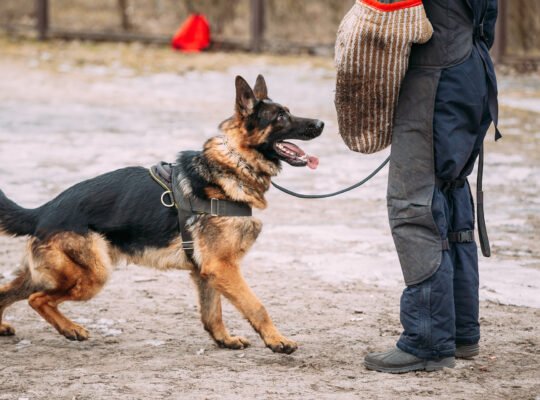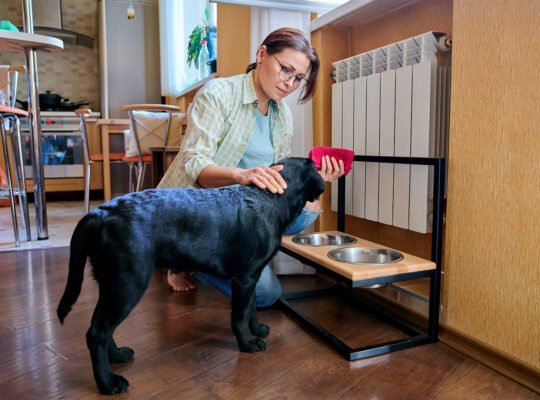Understanding Dog Behavior: Decoding Canine Body Language
Excerpt: Unleash your knowledge of dog behavior by unraveling the mysteries of canine body language. From tail wags to ear positions, nderstanding-d explore the subtle signals that our furry friends use to communicate their emotions and intentions.
1. Introduction
Dogs have an incredible ability to communicate with us and with each other through body language. While they may not speak our language, they convey their thoughts, feelings, and intentions through a variety of physical cues. To truly understand our canine companions, it is crucial to decode the complex and nuanced language of their bodies. In this article, we will delve into the fascinating world of dog behavior and explore the meanings behind their various gestures and expressions.
3. The Importance of Decoding Canine Body Language
Decoding dog behavior is essential for several reasons. By understanding what our dogs are trying to communicate, we can:
Strengthen the bond: Interpreting our dog’s body language allows us to build a stronger connection with them. It enhances our ability to respond appropriately to their needs and desires, thereby deepening the trust between us.
Prevent conflicts: Dogs use body language to express their boundaries and intentions. By recognizing these cues, we can prevent potentially dangerous situations and avoid misunderstandings with other dogs and even humans.
Improve training: Effective training relies heavily on understanding dog behavior. By recognizing the subtle signals our dogs give us, we can tailor our training methods to their individual needs, resulting in more successful and enjoyable training sessions.
4. Deciphering Canine Body Language
Understanding dog behavior involves observing and interpreting their body language in various contexts. Here are some key aspects to consider:
Tail Language: Wagging, Tucked, and Stiff
A dog’s tail is one of the most expressive parts of their body. Contrary to popular belief, a wagging tail does not always mean a dog is happy. Pay attention to the following tail cues:
Rapid wagging with a loose body: Generally indicates excitement and happiness.
Slow wagging with a lowered body: Suggests caution or insecurity.
Tucked tail: Sign of fear or submission.
Stiff, upright tail: Can be a sign of alertness or aggression.
Ear Positions: Upright, Forward, or Pinned Back
A dog’s ears can provide valuable insights into their emotional state. Consider the following ear positions:
Upright and forward: Indicates attentiveness and curiosity.
Pinned back against the head: Signals fear, submission, or aggression.
Eye Contact: Soft and Direct
Eye contact is a powerful form of communication between dogs and humans. Pay attention to the following eye cues:
Soft, relaxed eyes: Indicates a calm and friendly demeanor.
Direct, intense stare: Can be a sign of dominance or aggression.
Body Posture: Relaxed, Stiff, or Crouched
A dog’s body posture can reveal a lot about their mood and intentions. Look for the following cues:
Relaxed and loose body: Indicates a calm and content dog.
Stiff body with raised hackles: Suggests alertness, fear, or aggression.
Crouched body with lowered head: Sign of submission or fear.
Vocalizations: Barks, Growls, and Whines
While body language is the primary means of communication for dogs, vocalizations also play a significant role. Pay attention to the following vocal cues:
High-pitched whines: May indicate excitement, anxiety, or distress.
Low, rumbling growls: Can be a sign of aggression or warning.
FAQs about Understanding Dog Behavior: Decoding Canine Body Language
Q: Are tail wagging and ear positions the same for all dog breeds?
A: Tail wagging and ear positions can vary slightly between different breeds, but the general principles remain the same. It’s important to consider each dog’s individual traits and behaviors.
Q: Can dogs fake certain body cues to deceive us?
A: Dogs are capable of using body language to manipulate situations, especially if they have learned that specific cues elicit certain responses. However, genuine emotions and intentions are typically expressed through their body language.
Q: Are there any universal body cues that apply to all dogs?
A: While some body cues have general meanings across dog breeds, it’s essential to remember that each dog is an individual. What may be true for one dog may not necessarily apply to another.
Conclusion: Cracking the Code of Dog Behavior
Understanding dog behavior is a fascinating journey that opens up a deeper connection with our furry friends. By decoding their body language, we can effectively communicate, prevent conflicts, and provide the care and training they need. So the next time you find yourself observing your canine companion, pay attention to their tail wags, ear positions, and other subtle cues. With a little practice, you’ll become fluent in the language of dogs, forging an even stronger bond with your four-legged companion.
















